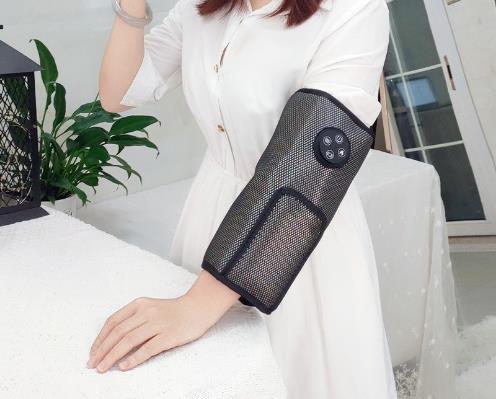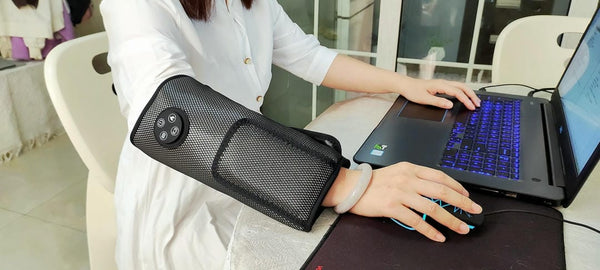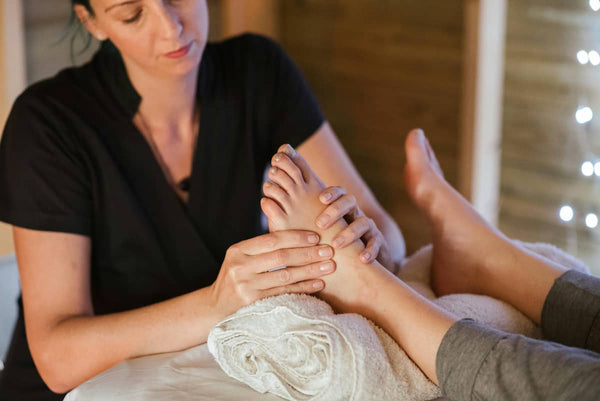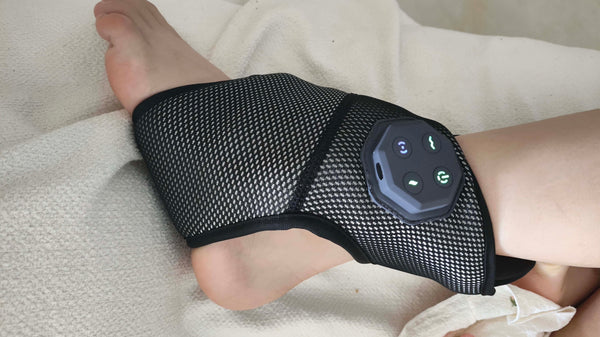 As a rehabilitation physiotherapist, I've seen countless runners push their limits, striving for new personal bests or simply enjoying the freedom of the open road. But let's be honest, that post-run soreness? It can be a real buzzkill! You're not alone if you've felt your legs screaming after a long run. Over 70% of runners experience some form of muscle soreness or fatigue, and managing this is key to consistent, injury-free training. That's why effective recovery strategies, especially targeted leg massage, aren't just a luxury; they’re a necessity for keeping your super legs super.
As a rehabilitation physiotherapist, I've seen countless runners push their limits, striving for new personal bests or simply enjoying the freedom of the open road. But let's be honest, that post-run soreness? It can be a real buzzkill! You're not alone if you've felt your legs screaming after a long run. Over 70% of runners experience some form of muscle soreness or fatigue, and managing this is key to consistent, injury-free training. That's why effective recovery strategies, especially targeted leg massage, aren't just a luxury; they’re a necessity for keeping your super legs super.
In this guide, we'll dive deep into how you can make your recovery as powerful as your runs, ensuring your legs are ready for tomorrow's challenge. We'll explore various tools and techniques, from high-tech gadgets to simple, yet effective, active recovery methods. Our goal? To get you back on your feet faster, feeling refreshed and strong!
Stop Leg Fatigue: Understanding Post-Run Muscle Soreness for Quicker Recovery
Have you ever finished a run feeling like your legs are made of lead, only to wake up the next morning with muscles that feel like they've gone ten rounds with a boxer? That, my friends, is often Delayed Onset Muscle Soreness (DOMS) kicking in. It's not necessarily bad, but it means your muscles have been working hard, creating microscopic tears in the muscle fibers. This isn't damage in a catastrophic sense, but rather a natural part of the adaptation process.
When you run, your muscles produce metabolic waste products like lactic acid, which, combined with inflammation from these tiny tears, contributes to that familiar ache and stiffness, particularly in your quads, hamstrings, and calves. Effective leg massage helps by increasing blood flow to these fatigued areas, essentially acting like a clean-up crew for your muscles. This enhanced circulation delivers fresh oxygen and nutrients while flushing out waste products, which can significantly alleviate leg pain and even prevent those sudden, painful leg cramps.
It's like giving your muscles a much-needed internal shower after a hard workout. Understanding this mechanism is the first step towards truly effective recovery. The more efficiently you can help your body clear out the metabolic byproducts and reduce inflammation, the quicker you'll bounce back.
Choosing Your Edge: Advanced Massage Equipment vs. Classic Active Recovery for Super Runners
When it comes to recovery, super runners have a smorgasbord of options, each with its own benefits. From cutting-edge tech to timeless techniques, knowing which one suits you best is crucial. Let's break down the main contenders:
 Pneumatic Compression Equipment (e.g., Klcosy)
Pneumatic Compression Equipment (e.g., Klcosy)
- Principle Overview: These futuristic-looking boots or sleeves use sequential compression, inflating and deflating to mimic the natural muscle pump action of the legs. This dynamic pressure helps to move fluid and waste products out of the limbs, similar to a high-tech lymphatic drainage system.
- Target Audience: Individuals who are serious about their recovery, often marathoners, ultra-runners, or athletes with high training volumes. If you're consistently pushing long distances and need rapid, effective recovery to maintain your training schedule, these are an ideal choice. Think of them as your personal pit crew.
- Effectiveness: Research suggests these devices can significantly reduce muscle soreness and swelling, accelerate recovery, and improve circulation. [Data needed: X% of users reported improvement, Source: [Statistical Year]] They're considered a premium option for targeted, intense recovery and are a prime example of modern massage equipment.
Vibrating Plate
- Principle Overview: Vibrating plates work by transmitting high-frequency vibrations throughout your body when you stand, sit, or lie on them. These vibrations cause muscles to contract and relax rapidly, which can improve blood flow, muscle activation, and flexibility. It's a bit like a mini-earthquake for your muscles!
- Target Audience: A more economical alternative, vibrating plates are popular among those looking for general muscle activation, flexibility improvement, and some recovery benefits without the higher cost of pneumatic systems. They're great for pre-workout warm-ups or a gentle post-workout loosen-up.
- Effectiveness: While not as targeted for deep recovery as compression boots, vibrating plates can still offer notable benefits for general muscle relief and mobility. They're a versatile piece of massage equipment that can be integrated into various routines, making them a recognized tool for light leg massage.
Active Recovery (Walking and Dynamic Stretching)
- Principle Overview: This isn't about fancy gadgets; it's about gentle movement! Low-intensity activities like a slow walk, light cycling, or dynamic stretches (like leg swings or torso twists) after a hard run help maintain blood flow without further stressing fatigued muscles. It’s a very natural approach to recovery, encouraging blood flow and reducing stiffness.
- Target Audience: Everyone! From seasoned runners to those just starting their fitness journey, active recovery is universally beneficial. It's free, accessible, and an excellent way to cool down and reconnect with your body after exertion. It's often superior to relying solely on devices because it involves your body's natural movement.
- Effectiveness: Actively moving, even slowly, helps flush out lactic acid and other metabolic byproducts, reduces muscle stiffness, and can improve flexibility. It's a cornerstone of any good recovery plan and, frankly, the most underrated form of leg massage. Think of it as a gentle internal wash!
Optimizing Your Recovery: Expert Recommendations for Personalized Leg Massage Protocols
As a physiotherapist, I always advocate for a personalized approach. There's no one-size-fits-all solution, but there are guiding principles. When should you try DIY techniques, and when is it time to seek professional help? To be honest, most day-to-day soreness can be managed at home, but recognizing red flags is crucial for your long-term running health.
For home recovery, combining these methods is your best bet. For instance, start with active recovery immediately after your run, then maybe use your leg massager for circulation an hour or two later. If you're experiencing persistent sharp pain, swelling, numbness, or pain that worsens despite rest and home remedies, that's your cue to schedule a consultation with a sports physiotherapist. We can diagnose underlying issues and guide you through tailored treatment plans, ensuring you return to running safely and stronger.
Remember, listening to your body is paramount. Don't push through significant pain, as that can lead to more serious injuries. Proper recovery is an investment in your running future, allowing you to hit those personal bests without unnecessary setbacks. [Internal Link: Learn more about professional sports physiotherapy benefits for runners]
Unraveling Your Recovery Questions: Common Concerns about Leg Massage Addressed
You've got questions, and as a physiotherapist, I've got answers! Let's tackle some of the most common concerns I hear from runners about managing their post-run aches and pains. Knowing these can really empower your recovery strategy.
How to massage legs after running?
After a run, the best initial approach is gentle and focused on promoting blood flow without causing further muscle stress. Start with active recovery like a 10-15 minute walk or light cycle. Then, for a hands-on approach, use a foam roller for 30-60 seconds on major muscle groups like quads, hamstrings, and calves, rolling slowly over tender spots. For a more targeted leg massage, a massage gun can be used on specific tight areas for 60-90 seconds per spot, keeping the pressure moderate. Always move towards the heart to aid venous return.
Does massage help leg cramps?
Absolutely, yes! While prevention is key (staying hydrated, maintaining electrolyte balance, and proper warm-ups/cool-downs), if a cramp strikes, gentle leg massage can often help. Massaging the cramped muscle can improve blood flow, help release tension, and facilitate the removal of waste products that might be contributing to the cramp. Light stretching of the affected muscle can also provide immediate relief. For persistent cramps, a leg massager for circulation can be incredibly beneficial in preventing future occurrences.
Is massage good for leg pain?
Generally, yes, leg massage is highly beneficial for various types of leg pain, especially those related to muscle soreness, stiffness, and fatigue from physical activity. By increasing blood flow, reducing inflammation, breaking up adhesions, and promoting relaxation, massage can significantly alleviate discomfort. However, it's crucial to distinguish between muscle soreness and other types of pain. If the pain is sharp, acute, persistent, accompanied by swelling, or resulted from a specific injury (like a fall or twist), it's important to consult with a medical professional, such as a physiotherapist, to rule out more serious issues. Massage is an excellant tool, but not a substitute for medical diagnosis!




0 comments